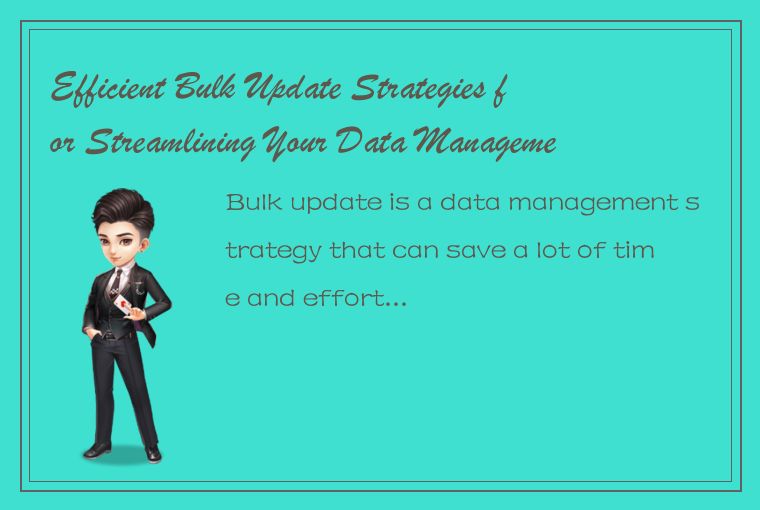Bulk update is a data management strategy that can save a lot of time and effort by allowing you to modify multiple records or data sets simultaneously. This strategy can be useful for a variety of tasks – from updating pricing information for your e-commerce platform to managing customer data for your CRM system. It is an efficient way to streamline your data management tasks, but you need to use the right strategy to make it work.

In this article, we'll explore some efficient bulk update strategies and best practices that can help simplify your data management tasks.
1. Plan Your Bulk Update
Before you start updating your data in bulk, you need to plan the process carefully. First, decide what data you need to update, and identify the specific fields or columns that need to be updated. Make sure you have access to all the data you need and create a backup of your data to ensure you can roll back to a previous version if needed.
2. Use a Spreadsheet
One of the easiest ways to update data in bulk is by using a spreadsheet. If you have a large amount of data that needs to be updated, a spreadsheet makes it easy to organize and modify your data in a simplified format. You can use tools such as Excel, Google Sheets, or LibreOffice Calc to list or modify the data.
To do this, you need to export your data to the spreadsheet program and make the updates you need. Once you’ve finished updating the data, save the spreadsheet and re-import the data back into your system.
3. Use SQL UPDATE Statements
If you are comfortable with SQL, you can use UPDATE statements to update data in bulk. The UPDATE statement modifies data in a table; it is executed using the WHERE clause that defines the criteria for selecting the records to be updated. The syntax for an UPDATE statement in SQL is as follows:
```
UPDATE table_name
SET column_1=value_1,column_2=value_2,...
WHERE some_column=some_value;
```
You can select the specific columns you want to modify and use the WHERE clause to filter the set of records you want to modify. This method offers more control and customization in updating data because you can target specific records or data sets with more precision.
4. Leverage APIs
Another efficient way to update data in bulk is by using APIs (Application Programming Interfaces). APIs are a set of protocols that allow different software applications to communicate with one another. Many software applications and services offer APIs for developers to manipulate data programmatically.
Using APIs, you can integrate your system with other platforms or services and update your data in real-time. Some popular APIs you might use for bulk updates include Google Sheets API, Zapier, and Microsoft Graph API. These APIs make it easy to import or export data between different platforms and automate your data management tasks.
5. Use Third-party Data Management Tools
Finally, you can leverage third-party data management tools to streamline your bulk update processes. A robust data management tool should enable you to manipulate your data efficiently, including exporting and importing data in bulk, updating records en masse, and automating data workflows.
Some popular data management tools include Airtable, Integromat, and Knack. These services offer a user-friendly interface where you can automate data tasks such as data import, validation, and updates with just a few clicks.
Conclusion
Bulk update is a great data management strategy that can save you a lot of time and effort. With the right strategy, you can efficiently update your data, manage your records and automate your workflows. Whether you use a spreadsheet, SQL statement, APIs, or third-party data management tools, you can quickly and easily manage your data and streamline your business processes.




 QQ客服专员
QQ客服专员 电话客服专员
电话客服专员